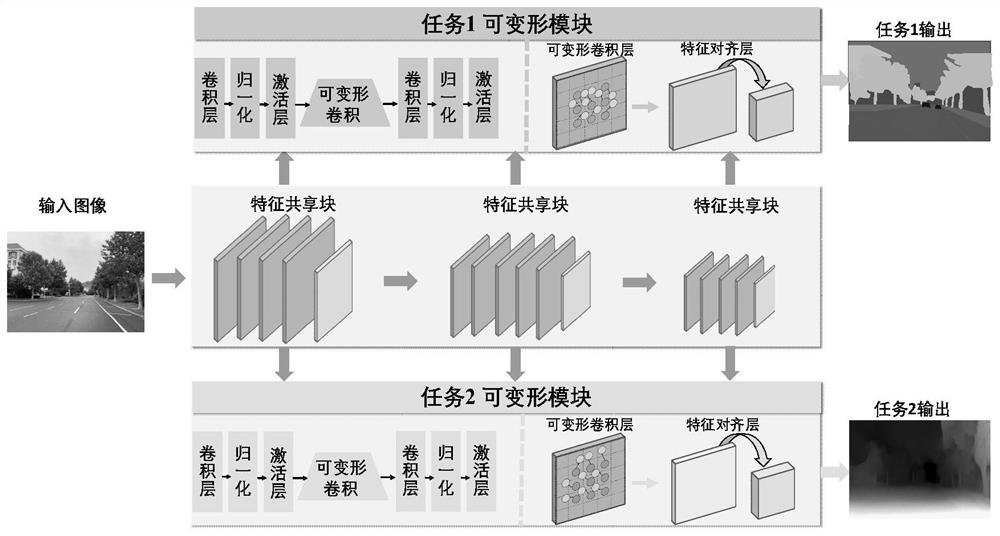A Multi-task Image Processing Method Based on Deformable Convolution
An image processing and multi-task technology, applied in the field of image processing, can solve the problems of inability to extract distinguishing task-specific features, limited spatial modeling capabilities, etc., to promote the optimization of difficult tasks, enhance spatial modeling capabilities, and improve performance. Effect
- Summary
- Abstract
- Description
- Claims
- Application Information
AI Technical Summary
Problems solved by technology
Method used
Image
Examples
Embodiment 1
[0042] This embodiment is designed from the aspect of the network structure design of the multi-task learning model, which significantly enhances the spatial modeling transformation capability of the multi-task learning model, and extracts and mines more discriminative specific task features.
[0043] In the multi-task image processing method based on deformable convolution in the present invention, when designing the network structure of the multi-task learning model, deformable convolution is introduced into multi-task learning. like figure 1 As shown, feature sharing network is used to extract different levels of feature sharing blocks; the deformable convolution layer and feature alignment layer are sequentially connected to build task-specific deformable modules; finally, task-specific deformable modules are used to share feature blocks with different levels of features Directly correspond to the connection. In this process, self-adaptive adjustment is realized according ...
Embodiment 2
[0068] During model training, the weight reset method is used for multi-task optimization: in the training process, the difficulty of sub-tasks is ranked in real time according to the relative loss reduction rate, and the weight of the loss function of the easiest sub-task is reset to zero, and the remaining sub-tasks are reset to zero. The task continues training; after two rounds of iterations, the weight parameters that have been set to zero are restored; the above steps are repeated to achieve a dynamic balance between subtasks during the training process, so that all subtasks are in an equally important position.
[0069] Specifically include the following steps:
[0070] Step a: Subtask weight initialization: According to the complexity of the task, set hyperparameters for the loss function of each subtask as the weight of the initial subtask, optimize the network, and obtain the final optimization goal.
[0071]Step b: Real-time determination of task difficulty: Calcula...
PUM
 Login to View More
Login to View More Abstract
Description
Claims
Application Information
 Login to View More
Login to View More - R&D
- Intellectual Property
- Life Sciences
- Materials
- Tech Scout
- Unparalleled Data Quality
- Higher Quality Content
- 60% Fewer Hallucinations
Browse by: Latest US Patents, China's latest patents, Technical Efficacy Thesaurus, Application Domain, Technology Topic, Popular Technical Reports.
© 2025 PatSnap. All rights reserved.Legal|Privacy policy|Modern Slavery Act Transparency Statement|Sitemap|About US| Contact US: help@patsnap.com



